Heart Vessel obstructed
The information provided here is not a replacement for a doctor. You shouldn't use it for the purpose of self-diagnosing or self-medicating but rather so you can have a more informed discussion with a professional TCM practitioner.
At a glance
Preliminary reading: What is a pattern? The Heart in Chinese Medicine The concept of Meridians
Key attributes
Chinese name: 心脉痹阻 Pinyin name: Xīn Mài Bì Zǔ
Pattern nature: Full combined pattern
Pattern(s) it combines from: Heart Blood Stagnation Heart Qi Stagnation Phlegm Cold
Causes
Precursor patterns: Qi Stagnation Yang Deficiency or Empty Yang
Common causes: 1. Emotional stress, 2. Diet, 3. Excessive physical work
Diagnosis
Common symptoms: Phlegm Depression Heart pain Chest pain Purple lips and ten other symptoms
Pulse type(s): Choppy (Se), Knotted (Jie), Slippery (Hua), Wiry (Xian)
Tongue description: Swollen tongue with a sticky coating.
Treatment
Treatment principle: Invigorate Heart Qi and Heart Blood, eliminate Stagnation, remove Phlegm, expel Cold, open the chest, calm the Mind.
Common formulas: Xue Fu Zhu Yu Tang Chai Hu Shu Gan San Di Tan Tang and one other formulas
Pathology
This is a complicated pattern as it is the combination of four other patterns and their features at the same time: Phlegm, Heart Blood Stagnation, Heart Qi Stagnation, and Cold.
If Phlegm is the dominant one out of the above four patterns, the pulse is rather Slippery instead of Wiry, Choppy or Knotted. Regardless the Phlegm in the Heart is of Hot or Cold nature, it can cause a swollen tongue, a feeling of chest oppression, feeling of heaviness, shortness of breath with inability to lie down, and spitting of phlegm. Di Tan Tang, together with Long-stamen onion builbs, Snake gourds and Crow-dipper rhizome, is more suitable for treatment if Phlegm is the main feature.
Heart Blood Stagnation causes stabbing or pricking pain which comes and goes. This pain often occurs around the Heart or chest area but may also spread to the upper back or shoulder. In additional to that, the patients' lips, face, nail and tongue can turn to purple color due to the Stagnation of Heart Blood. Xue Fu Zhu Yu Tang is more recommended if these features are more obvious.
Emotional symptoms such as mental restlessness or depression are caused by both Heart Qi and Blood Stagnation. Chai Hu Shu Gan San is recommended if Heart Qi Stagnation is more dominant.
Finally, there are also Cold pattern features such as cold hands or feeling of cold. This Coldness can congeal muscle and worsen chest pain discussed above. In this case, it is suggested to use Dang Gui Si Ni Tang together with Immature bitter orange, Long-stamen onion bulbs and Cinnamon twigs.
Causes
Precursor patterns: Heart Vessel obstructed can derive from Qi Stagnation Yang Deficiency or Empty Yang
Emotional stress: Emotional stress such as worry, anxiety and anger can cause Heart Qi Stagnation and then Heart Blood Stagnation.
Diet: Excessive consumption of dairy foods and greasy foods accumulates Phlegm, which is one of the pathogenic factors in this pattern.
Excessive physical work : Excessive physical work can harm Heart and Kidney Yang, which then fail to move Blood and Qi in the chest. As a result, Heart Qi and Blood stagnate.
Diagnosing Heart Vessel obstructed
Diagnosing a pattern in Chinese Medicine is no easy feat and should be left to professional practitioners. In particular one has to know how to differentiate between different types of pulses and tongue coatings, shapes and colors as well as learn to read from a long list of seemingly unrelated symptoms.
Pulse type(s): Choppy (Se), knotted (Jie), slippery (Hua) or wiry (Xian)
Tongue description: Swollen tongue with a sticky coating.
Main symptoms: Phlegm Depression Heart pain Chest pain Purple lips Purple face Palpitations Purple nails Restlnessness Frequent sighing Aversion to speak Shortness of breath Cold hands and feet Feeling of heaviness Feeling of oppression of the chest
Diagnosis commentary: Key characteristic symptom of this pattern is chest pain. Actually together with Heart Blood Stagnation, they are the only two Heart patterns that involves chest pain.
Treating Heart Vessel obstructed
Treatment principle
Invigorate Heart Qi and Heart Blood, eliminate Stagnation, remove Phlegm, expel Cold, open the chest, calm the Mind.
Herbal formulas used to treat Heart Vessel obstructed
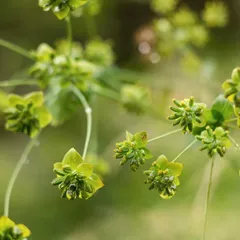
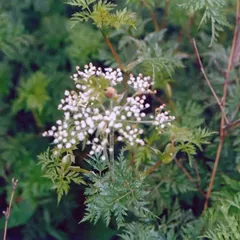
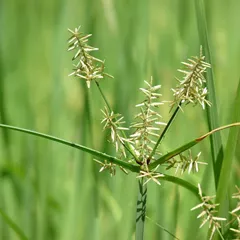
The top herbs in Chai Hu Shu Gan San are Bupleurum Roots (Chai Hu), Szechuan Lovage Roots (Chuan Xiong) and Coco-Grass Rhizomes (Xiang Fu)
Chai Hu Shu Gan San
Source date: 1602
Number of ingredients: 7 herbs
Key actions: Disperses Stagnant Liver Qi and Blood. Alleviates pain. Harmonizes Blood.
Formula summary
Chai Hu Shu Gan San is a 7-ingredient Chinese Medicine formula. Invented in 1602, it belongs to the category of formulas that promote Qi movement.
Besides Heart Vessel obstructed, Chai Hu Shu Gan San is also used to treat Rebellious Qi or Liver Blood Stagnation.
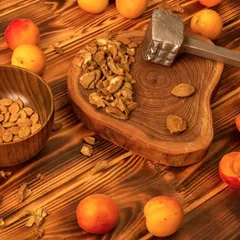
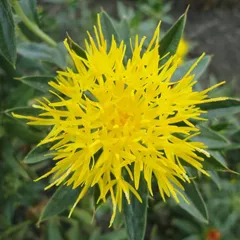

The top herbs in Xue Fu Zhu Yu Tang are Peach Kernels (Tao Ren), Safflowers (Hong Hua) and Szechuan Lovage Roots (Chuan Xiong)
Xue Fu Zhu Yu Tang
Source date: 1830 AD
Number of ingredients: 11 herbs
Key actions: Invigorates the Blood. Dispels blood Stagnation. Spreads the Liver Qi. Unblocks the channels.
Formula summary
Xue Fu Zhu Yu Tang is a 11-ingredient Chinese Medicine formula. Invented in 1830 AD, it belongs to the category of formulas that invigorate Blood and dispel Blood Stagnation.
Besides Heart Vessel obstructed, Xue Fu Zhu Yu Tang is also used to treat Heart Blood Stagnation or Qi And Blood Stagnation.
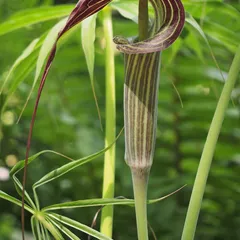
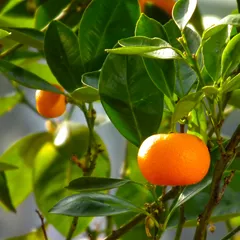
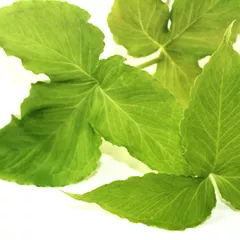
The top herbs in Di Tan Tang are Arisaema (Tian Nan Xing), Red Tangerine Peel (Ju Hong) and Crow-Dipper Rhizomes (Ban Xia)
Di Tan Tang
Source date: 1470 AD
Number of ingredients: 9 herbs
Key actions: Removes Phlegm. Opens the sensory orifices. Tonifies Qi.
Formula summary
Di Tan Tang is a 9-ingredient Chinese Medicine formula. Invented in 1470 AD, it belongs to the category of formulas that dispel Phlegm.
Besides Heart Vessel obstructed, Di Tan Tang is also used to treat Phlegm Misting the Heart.

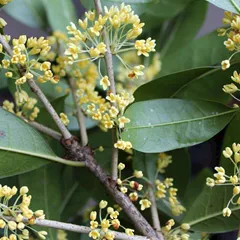

The top herbs in Dang Gui Si Ni Tang are Dong Quai (Dang Gui), Cinnamon Twigs (Gui Zhi) and White Peony Roots (Bai Shao)
Dang Gui Si Ni Tang
Source date: 220 AD
Number of ingredients: 7 herbs
Key actions: Warms the Channels. Disperses Cold. Nourishes the Blood. Unblocks the Blood vessels.
Formula summary
Dang Gui Si Ni Tang is a 7-ingredient Chinese Medicine formula. Invented in 220 AD, it belongs to the category of formulas that warm Interior Cold.
Consequence patterns
Blood Stagnation and Phlegm are the two patterns under this complex aggregated pattern. When Blood stagnates or Phlegm accumulates in the chest, it can cause Dryness in other part of the body.
